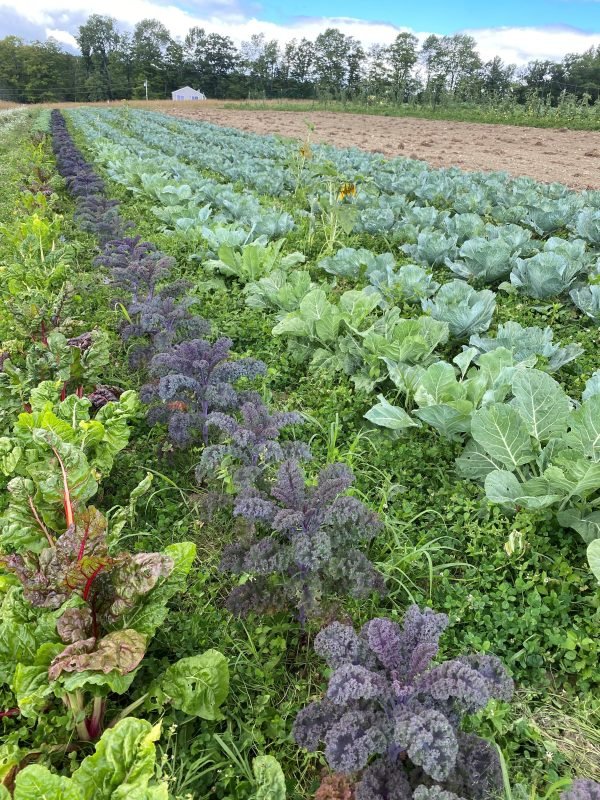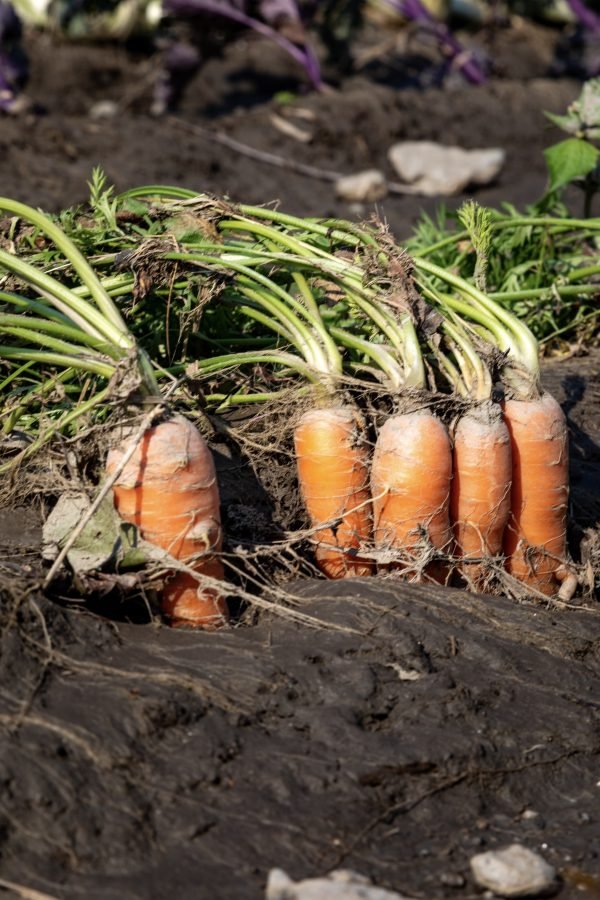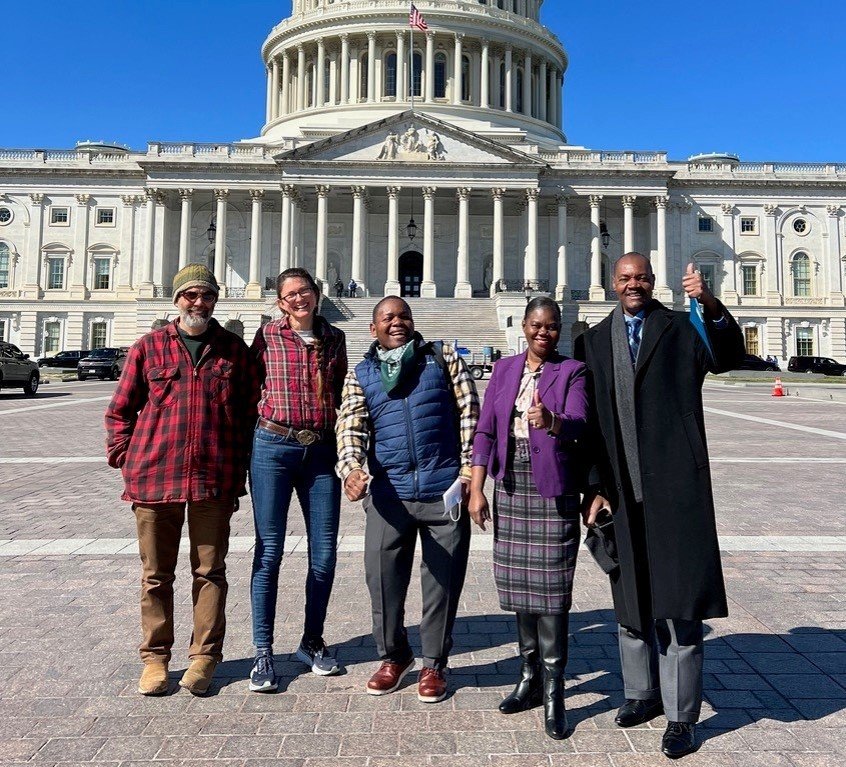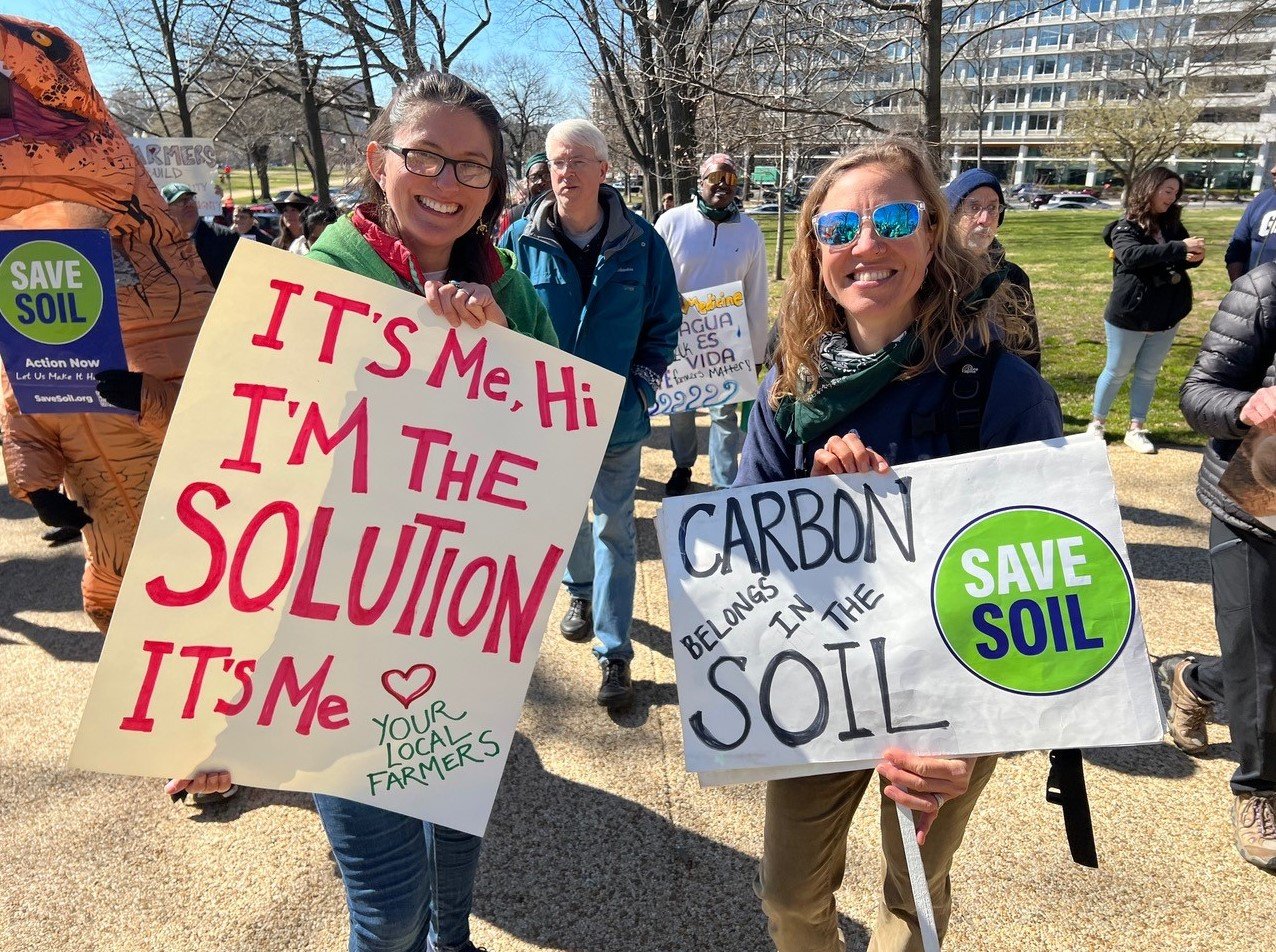On front lines of climate change: Farmers work to mitigate their climate impacts and become more resilient
By Jacob Nelson
It’s hard to throw water on a burning house while trying to rebuild it at the same time, but that’s exactly what addressing climate change requires. Rising greenhouse gases in the atmosphere are already changing the planet. The choice is whether or not to keep fueling the change, and how to adapt.
For Massachusetts farmers whose livelihoods are on the line, the daily impacts of climate change are impossible to ignore. Now, many of them are speaking up to find the resources they need to defend their farms and ultimately, our planet.
Climate change is here
As the atmosphere gets warmer and wetter, weather patterns are expected to be more severe and erratic. In New England, the weather whiplash in recent years aligns with this. Persistent rain in 2021 muddied fields and stunted crops. Then 2022 brought an intense drought.
“2023 has been one thing after another,” says farmer Sarah Voiland. Deep freezes in February and May damaged fruit crops, then July brought historic rainfall and catastrophic flooding followed by diseases that thrive in damp conditions. Farms of all kinds have seen their harvest wither or wash away.

Some of Red Fire Farm’s fall harvest displayed at the Farmers’ Market at Forest Park in Springfield (Lizzy McEleney photo)
“Most farms operate on thin margins,” says Voiland, who with her husband, Ryan, owns Red Fire Farm, a certified organic produce farm based in Montague and Granby.
“When crops come through reasonably well, we do OK, but these repeated extreme weather events seem to be getting worse. When the risk we face goes up this fast, the future looks scary.”
Scary for their business and for the big picture. For Voiland and other farmers feeling climate change’s impacts firsthand, it’s hard not to worry about the fate of others around the globe.
“As an individual, figuring out what you can do about climate change is overwhelming,” she acknowledges. “But you can always do something. I just decided to do at least one thing about climate change every week.”
This perspective is shared by many climate advocates — that no one has all the answers, but everyone has some skill or resource to help douse the fire and start rebuilding. Where farming and climate change overlap, Voiland sees three ways farmers are contributing: balancing greenhouse gas emissions from farming, adapting to climate change impacts, and speaking out.
Putting out the fire
Farms use energy to grow food. Much of that energy comes from fossil fuels, but there are many ways for farms to be more energy efficient or use renewable energy. Often these strategies don’t just lower emissions, they lower costs, too. This dual motivation is what inspired Happy Valley Organics, a farm growing mostly herbs and greens on 100 acres of fields and six acres of greenhouses in Whately, to go solar.
“We started thinking about renewable energy in 2008 when we put a 3-kilowatt solar photovoltaic system on our packing barn,” says DeWitt Thomson, who owns the business alongside farming partner Doug Coldwell. “Our greenhouses use a lot of energy, we were interested in offsetting some of that, and solar seemed the way to go.”
Working with Northeast Solar, Happy Valley Organics installed two large solar fields on their property in 2011 and 2016. Now those panels produce well over a million kilowatt-hours of electricity each year — enough to power 100 average homes.

Low-till vegetable cropping at Sawyer Farm in Worthington, with clover acting as a living mulch (Sawyer Farm photo)
Of course, there were trade-offs. Some panels cover farmable soil, and greenhouse growing uses significant energy. At the same time, growing in solar-powered greenhouses means the farm can protect their crops from extreme weather, produce more food year-round in less space, and stabilize their income.
For Happy Valley Organics, this shift has been successful. Other farms might choose differently, depending on their crops, space, or business models. Yet given the breadth of technology available, every farm can likely reduce their energy consumption, and many can generate renewable energy, too.
How farmers — and all landowners — manage their soil also can change the global balance of greenhouse gas emissions. Scientific understanding is evolving, but the basic premise is clear: Increasing organic matter in the soil has the net effect of sequestering some greenhouse gases from the atmosphere.
Strategies for doing this vary, as do their effectiveness over time, but usually involve reducing soil disturbance (think “no-till” or “low-till”) and adding more carbon-rich materials such as compost or manure. This helps create a rich and diverse soil ecosystem full of microbes, fungi, and plants working together to transform atmospheric carbon into complex molecules stored in the soil.
As awareness grows about these climate- and soil-friendly farming practices, the U.S. Department of Agriculture and others are offering more financial incentives for farmers to farm this way. Still, changing how you farm can be costly, not to mention the huge learning curve. Despite the benefits, it’s a journey local farmers can’t embark on lightly.
Adapting to a riskier world
Even if greenhouse gas emissions ended overnight, impacts like extreme weather will intensify before they get better. Farming has always been full of risk and uncertainty, but now both are increasing. So, local farmers are doing what they’ve always done: adapting.

Carrots uprooted by floodwaters at nearby Natural Roots Farm in Conway (Paul Shoul photo)
Many farmers are choosing different species or strategies to raise more resilient plants and animals that can thrive even in chaotic conditions. Others are diversifying where and when they plant so even if some things struggle, others might thrive. More farmers also are investing in soil health, since less disturbed soil with more organic matter is better at absorbing heavy rains and holding water during dry spells.
Other adaptations involve keeping a tighter handle on growing conditions. Here, the rallying cry is “infrastructure.” Irrigation for droughts, ditches and drains for wet periods, structures to protect plants and animals from the elements — all these strategies use equipment to give farmers more control.
For example, Barstow’s Longview Farm in Hadley installed fans, curtains, and sprinklers in their milking barn to keep their hundreds of dairy cows comfortable during summer heat waves.
“Comfortable cows make more milk, better milk, and are easier and cheaper to take care of,” explains farmer Denise Barstow-Manz. “We don’t want our girls to be unhappy, and it can really impact our bottom line.”
Yet these projects can be expensive, and newer farmers or those with fewer resources often have a harder time making or recouping that investment. Programs like the state’s Food Security Infrastructure Grant program and other grant programs offer Massachusetts farms some funding. Still, the $25 million in this year’s budget for food security infrastructure is small compared to farmers’ needs.
Then there are the risks that no farmer can truly adapt to, like a river flooding its banks and washing away entire fields. Here, many local farmers say we need stronger safety nets that farmers can lean on after crises.
At Barstow’s Longview Farm, last July’s flooding put almost 150 acres of hay and corn underwater, and the amount and quality of the feed they harvested for their cows suffered.
“Thankfully we got more than thoughts and prayers from local organizations and legislators,” says Barstow-Manz. “They set up the Natural Disaster Recovery (NDR) Program for Agriculture (offering at least $15 million in state-funded grants for farms who lost crops to floods and freezes) and helped launch the Massachusetts Farm Resiliency Fund (a philanthropic fund that raised $3.2 million in donations for impacted farms). And Community Involved in Sustaining Agriculture (CISA) is offering 0% interest loans through their Emergency Farm Fund.”
Yet these existing state programs can’t keep pace with impacts. Case in point, over 350 farms applied for NDR grants, documenting more than $42 million in crop losses alone, never mind damage to equipment, buildings or land. Meanwhile, federal programs like disaster loans and crop insurance are slow-moving and designed mostly for large farms growing commodity crops like corn and soybeans — not your typical Massachusetts farm.
Telling the story, getting help

Left to right: Sarah and Ryan Voiland of Red Fire Farm, Barnabas Forndia of Juahkumbah Farms, and Marie Romaje and Jean Brevette of Trinity Farms attend NSAC’s Farmers for Climate Action Rally for Resilience in Washington, D. C. (Jessy Gill photo)
While local farms are deeply threatened by climate change, they are adapting and can help reverse the problem. But for change to come quickly enough, “We need to tell the story of what’s happening,” says Voiland, “and we need to get help doing something about it.”
As Voiland’s weekly actions build on themselves, she is speaking up for farmers at the local and national level. Last March, she and Ryan Voiland flew to Washington, D.C., joining farmers from across the country to meet with legislators and rally for more nuanced federal support for climate-friendly farming. This was organized by the National Sustainable Agriculture Coalition (NSAC), a leading advocate for sustainable farming at the national level.
“Hearing other farmers’ stories and talking about what we want to push for was really helpful,” she says.
Last September, Voiland also helped organize an event called “Local Farming in the Climate Crisis” with the Episcopal Church of Saints James & Andrew in Greenfield and CISA. There, she shared her story with the crowd and facilitated a discussion about how attendees could support local farms. This was part of CISA’s Climate Change and Farming Week events, which built awareness of climate solutions and opportunities for local action.
Farmers are often the best advocates for climate action. They are a “frontline community,” bearing the brunt of climate change’s impacts. As stewards of so much land, they also have a big role to play in potential carbon sequestration. But relying on frontline communities to do the heavy lifting of advocating for change is fraught. Many groups in this category face disproportionate climate impacts precisely because they lack resources or are marginalized in other ways.

Sarah Voiland marches with a new friend, Janet Aardema of Broadfork Farm in Virginia, during a Farmers for Climate Action event in Washington, D.C. organized by the NSAC
For local farmers, what they lack is time. “I talk to a lot of farmers who want to do more with climate action,” she says, “but we’re all so busy. We need others to help amplify farmers’ voices.”
Already, community members are stepping up to do that. Locally, CISA and other organizations are helping farmers adapt and helping community members support them. More information is available at buylocalfood.org/climateaction, and those interested in getting involved more deeply are encouraged to contact climate@buylocalfood.org.
At the national level, Congress will soon debate a new Farm Bill. This legislation, renewed every five years, controls most federal spending that can help farmers survive the modern economy and farm with the climate in mind. NSAC and other advocates have instructions for contacting legislators to support climate-friendly provisions, and stress that the volume of voters calling and emailing is what matters most.
“Having community support is important,” says Barstow-Manz. “It’s more than just nice to have local food. It’s a national security issue. People need to eat, and we have to sustain the farms we have left, across the country and here in our Valley.”
Jacob Nelson is communications coordinator for CISA (Community Involved in Sustaining Agriculture). As a frontline supporter of local food and farms in western Massachusetts, CISA helps farmers get the help and funding they need to thrive, even amid challenges like climate change. Learn more at buylocalfood.org.

